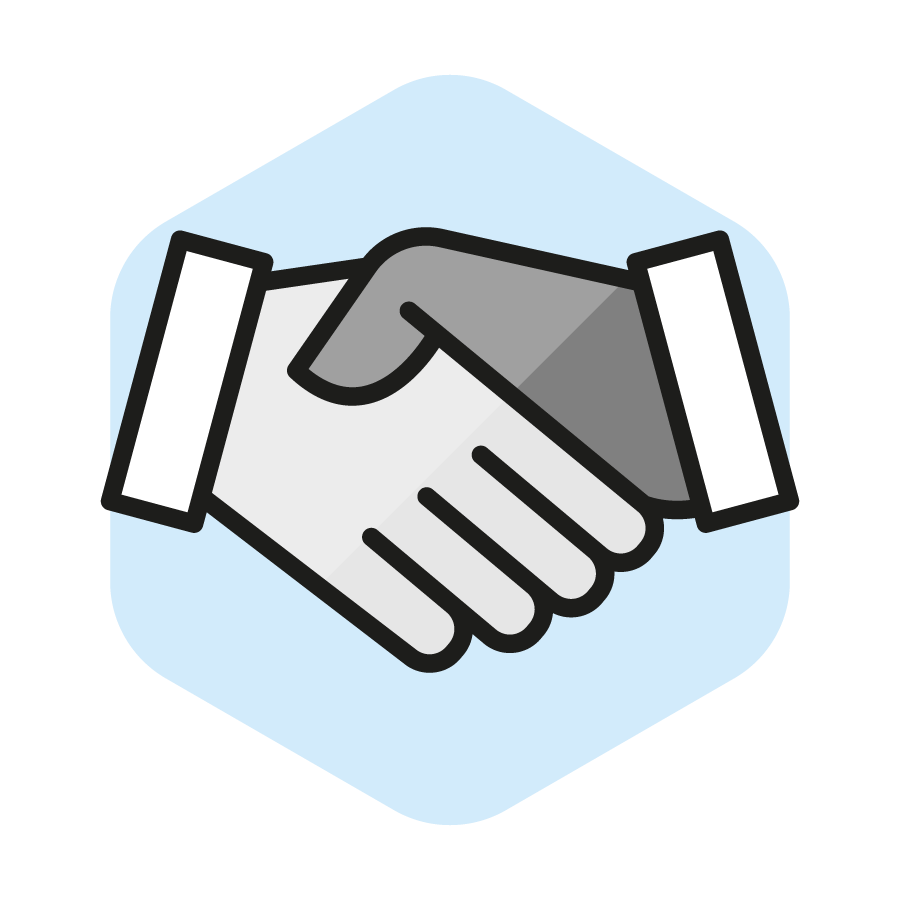How to sell an idea
Marketing, licensing & business
Before you think about choosing which is the right path for you to commercialise the idea, it is important to show that you have invested a small amount in the project yourself, to professionally develop the idea. This is why protecting and designing the product are so important, prior to marketing.
This section will explore how to sell an idea through licensing. The other route to market your idea is to self-manufacture, for more info see Business start-Up
A common misapprehension with new inventors is that the hard work stops after the product is protected and designed; however, this is not the case. You have to be prepared to drive your product no matter which avenue you choose; this is where the hard work begins. Persistence and perseverance are key to putting your product in front of industry and the following section will talk through the steps needed in order to effectively sell your idea.

Licensing a product idea > Sell an Idea
What is a licensing agreement?
Licensing agreement: A licensing agreement for a new product idea is a contract between yourself, as the inventor, and the manufacturer, to manufacture, distribute and advertise your product as their own, while you receive a percentage of the royalties.
There are 3 main types of license:

- An exclusive license: whereby only one company has the rights to produce your product.
- A sole licence: whereby only one company and you have the rights to produce your product.
- A non-exclusive license: whereby any number of companies and you can produce your product.
- Licensee: the licensee is the company to whom you are licensing your product.
- Licensor: as inventor, you are the licensor who is licensing your product out to a company.
What is included in a licensing agreement when selling an idea?
Licensing agreements to sell ideas contain several terms and conditions dependent on
those negotiated between the inventor and the individual company or companies.
These terms can include the following:

Length of Contract:
This could be set from as little as 6 months; however it is important to counter in the time it will take to produce the product. By setting a time limit you can monitor sales figures and company productivity to make sure they are marketing your product as you see fit. Similarly, by setting a time limit you can use the money accrued during the licensed period to then take on the project yourself. By that time, the product will also be established.

Exclusivity of the contract:
This refers to the type of contract agreed, with the 3 main options shown above: exclusive, sole or non-exclusive. Usually, a company will ask for exclusive rights. In this scenario, it is often more likely to negotiate a higher royalty payment.

Advance:
Some companies will offer an advance payment as an upfront lump sum. This should be negotiated where possible as it can be very advantageous. Sometimes products can take some time to get to market, after development, and therefore you will not accrue payments until a time as the product is sold. An advance can allow for this.

Royalties’ structure:
The most common form of payment, irrelevant of the advance, is to be paid by royalties. Royalties are a percentage of the wholesale price and not the profit, therefore your royalty is usually paid for by the consumer – as this is countered into the retail price. Some companies will allow for minimum royalties to be paid to you, irrelevant of sales. This way, you will always receive an income from the product even if it is not on the shelf!

Payment Schedule:
Advance payments, if negotiated, are paid up front. Some companies will provide additional lump sum payments when certain sales targets are met and these can be negotiated at the time of writing the contract. However, the most common form of payment is royalties, whether lump sum payments are included or not, and these are usually paid monthly or quarterly. Payments offered any less frequently than quarterly should be re-negotiated as this is not an adequate form of payment. Whether they pay monthly or quarterly will depend on the individual company.

Intellectual Property Involvement:
Some companies will offer to advise on, and cover the cost of, any future Intellectual Property application. This can be extremely beneficial for both parties: for you, this can save the future potential costs associated with international applications; for them, this can provide the security that future international applications can still be applied for as they have a budget to allow for this which the licensor may not. This also allows them to advise in which countries they wish for the product to be protected. The extent of their involvement will vary dependent on the company.



Legal Fees / Liability:
Much the same as the Intellectual Property involvement, companies can also offer to cover the cost of any future legal fees. This can range from having the licensing agreement itself written, to covering a lawsuit for infringement. They can also assume liability for any future legal issues. This is beneficial for the company as, if a legal battle arose and the licensor did not have the funds to pay for this, production of the product may have to cease and the licensee is therefore directly jeopardised. As such, companies would want to have this eventuality covered, as would you, as licensor.


Improvements / Modifications:
It is sometimes possible to allow for any future modifications or improvements that are made to the product by the company to also be included as part of the agreement. This means that future improved products, or subsidiary products that are derived from your concept, are also held under the same agreement, meaning a continued royalty for you. This can increase the longevity of the license and your payments.


Geographical Jurisdiction:
This defines the locations, countries, or group of countries in which the licensing agreement is upheld. If the company to whom you are looking to license only has a UK presence then you may look to obtain solely a UK license with them, so that you can license the product abroad without any conflict. If licensing to an international company, they may require an international license or may specify particular countries in which they wish to distribute the product.
What does the inventor get in return?
- The inventor receives a percentage of the wholesale profits as their reward.
- An advance payment can be provided.
- Other times the inventor receives set bonuses when certain sales targets are met.
- Most deals will include a minimum payment that the company must make to the inventor, irrelevant of sales.
- Future legal fees and Intellectual Property advice can be covered.
What are the benefits of a licensing agreement?
- Total investment, and therefore total risk, is provided by the company or companies to whom you are licensing your product.
- Licensing to an expert in the industry means that a company with the relevant networks and means already in place can get your product to market more quickly and successfully than if you took on the project yourself.
- By licensing for a certain time, you can use an established company to help build the reputation of your product before taking it on yourself.
- Legal costs can often be negotiated so that the concern of future costs and legal issues becomes the responsibility of the licensee.
How can Innovate help you sell your ideas?
Protection: Innovate can help to protect your idea prior to approaching companies when selling an idea. If your product is patentable and/or the design can be registered, then companies will expect these applications to have been filed prior to disclosure. We can help with patent searching, patent application, registered design application, trade mark searching and trade mark application to ensure that your product has the best available protection with which to license your product.
Designs: licensees will expect at least a basic level of design work to have been completed prior to licensing. The more work that is put in at this stage then the greater the chances of licensing the product and the higher reward that is likely to be offered. The more development that can be completed at this stage, the greater your chance of success at market. Innovate can help to visualise your product idea, taking into consideration manufacturing feasibility and materials, to help better represent your idea to industry and show a dedicated investment in the project.
Presentation: as part of the design and development, Innovate can help prepare presentation material for pitching your product idea. This allows you to professionally present your designs and helps the product or business idea to sell itself.
Prototypes: when licensing, prototypes are not always a necessity, however some companies may ask for one. For some products, it is necessary to prove that the designs will work. Innovate can help create ‘proof-of-principle’ prototypes to better demonstrate your product.
Licensing Information: alongside the design presentation material, Innovate can provide you with the relevant contacts and information to take your product forward. This includes template letters, NDAs and recommended companies to approach. This provides enough information to begin your approach to industry.
Product Marketing Advice: Innovate have their own in-house product marketing and business advisor who can provide further assistance when licensing, should it be needed. This allows a more hands-on approach to marketing, should you not have the confidence, time or skills needed to go it alone.
To start this process click here to request a free info pack
You might also be interested in…
